Christmas has passed and it’s time to pack away garlands, sparkling baubles and golden stars. This year, did you opt for a living Christmas tree, sold in a pot with its roots so you can give it a second life in the garden? Good choice — now it’s time to put it into the ground unless you prefer to plant it in a decorative pot so you can reuse it next year. Whatever you choose, follow our step-by-step guide to replant your Christmas tree.
Which trees can be replanted?
First, make sure you buy an uncut tree, but in a pot or root ball, that is to say with its root system.
The tree most commonly sold for the festive season is Norway spruce or Picea abies. You will also find Nordmann fir or Abies nordmanniana, prized for its denser branches whose needles last longer without falling and noble fir (Abies Nobilis).
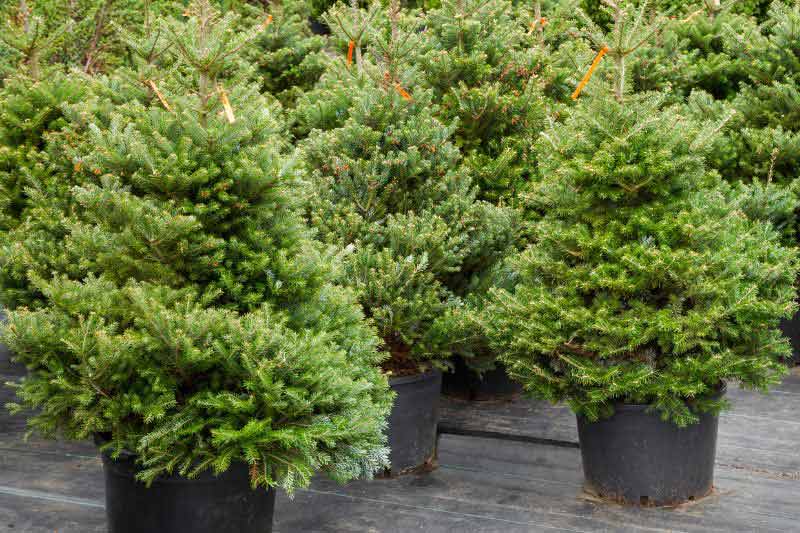
Hardy and resilient, these trees will move from house to garden provided you give them space, fresh deep soil that is not too calcareous and partial shade. Even if your tree looks adorable trimmed with lights for the holidays, it will still reach about 30 m in height with a 6–7 m spread after many years in the ground… so take its future growth into account before planting it in the garden!
Caring for your tree indoors during the Christmas period
- To improve its chances of survival, don’t bring it indoors too early before Christmas — leave it outside on your terrace for example or use it to decorate your entrance
- When you do bring it inside for Christmas, place it in as cool a spot as possible (not in front of a radiator or near the fireplace)
- Remember to water and mist it regularly. Place a saucer under the pot to avoid flooding the living room
- Put it outside or in an unheated space for a few days before replanting
- Replant it as soon as possible once the festivities are over, because heated indoor conditions are not ideal for its survival
Planting the tree in the ground
If you have enough space, you can plant the Christmas tree in the ground in the garden: as a specimen or at the back of a border. Choose the spot best suited to its future development and work outside frosty periods.
Tools and materials to prepare for planting in the ground:
- Put on thick gloves and cover your arms to protect against the needles
- A spade or digging fork
- A shovel
- Compost or leaf mould
- A watering can or hose
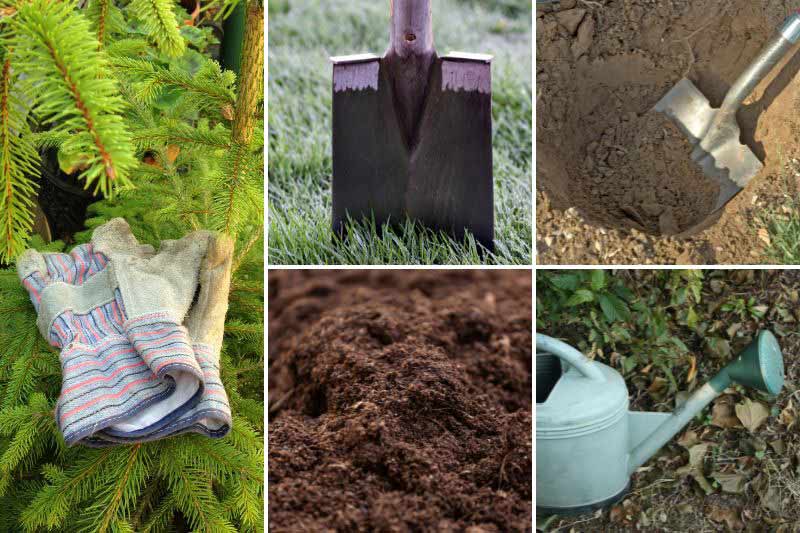
Planting in the ground:
- Clear weeds from the chosen location
- If possible, dig over the soil two weeks before planting to a depth of about 30 cm and an area of around 50 cm to aerate it
- Remove large stones and break up the soil to obtain loose soil
- Before removing the tree from its pot, soak the root ball in a tub of water. Despite watering, it may be quite dehydrated
- While it soaks, dig the planting hole. It should be approximately twice the volume of the root ball or container. If your soil is not stony, you can add fine gravel to the bottom of the hole for better drainage
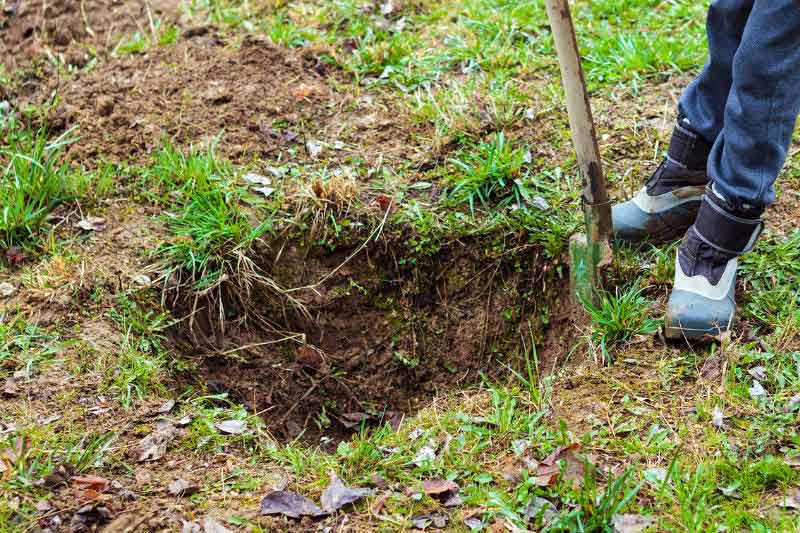
- Place the root ball in the hole without breaking it up. The collar should be level with the soil surface.
- Backfill with fine soil (2/3) mixed with compost or leaf mould (1/3)
- Firm by hand or gently with your foot
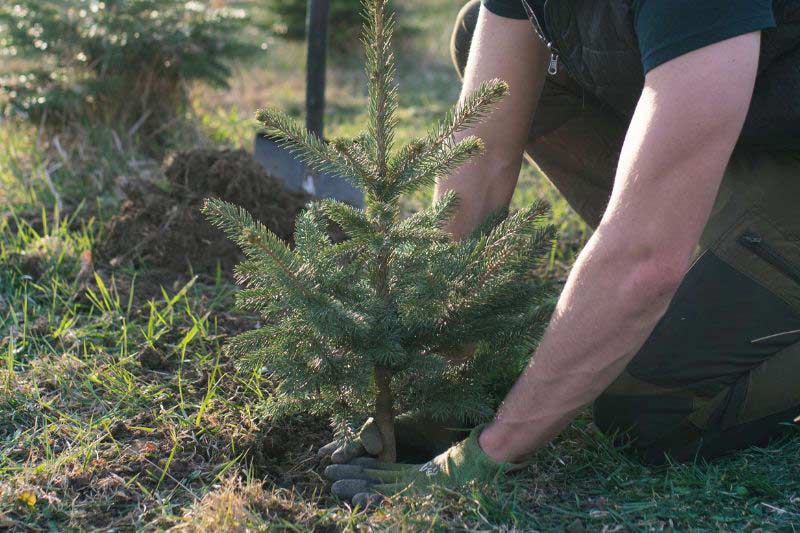
- Create a watering basin around the trunk and water copiously (approximately 10 litres of water)
- Consider mulching the base of your tree to prevent adventive growth and retain moisture
Keeping the tree in a pot
If you chose a tree with its roots, you can certainly keep it in a large pot outdoors and bring it in again next year. It will survive well for a few years provided you do not leave it indoors for too long and you remember to water it at home and in summer outdoors. With proper care and regular repotting, you can reuse it for several years.
Tools and materials to prepare for planting in a pot:
- A large wide pot, ideally twice the size of the root ball and with a drainage hole in the base. For material, you can choose plastic (lighter and economical) or terracotta (more attractive, eco-friendlier and allowing better aeration of the roots)
- Multi-purpose compost or a mix of 2/3 garden soil and 1/3 well-rotted compost
- Gravel, clay pebbles or pumice
- A hand trowel
Planting in a pot:
- Soak the root ball in water for about ten minutes
- Place a layer of clay pebbles, pumice or gravel at the bottom (around 10% of the pot volume) to ensure good drainage
- Cover with some of the compost mix
- Set the tree in place, with the top of the root ball a few centimetres below the pot rim
- Fill in with the remaining mix
- Firm gently by hand around the trunk
- Water
- Spread an organic mulch to help prevent the growing medium from drying out too quickly
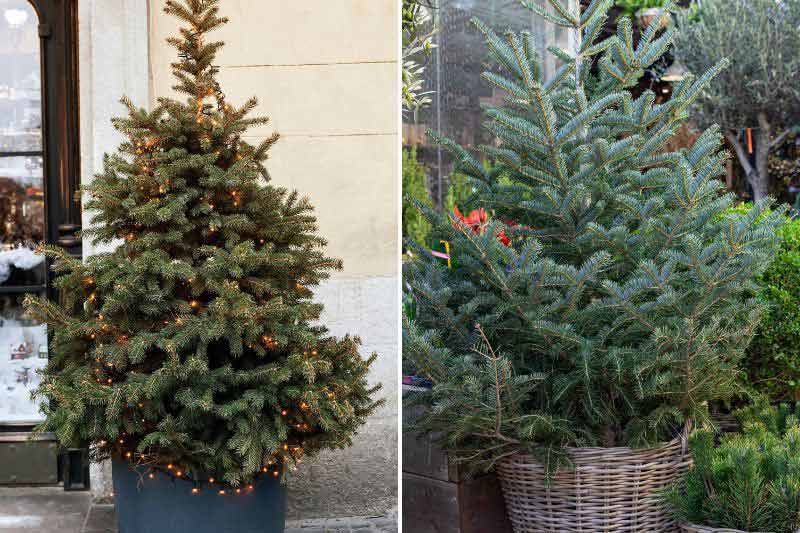
Repot your tree into a slightly larger container each year, ideally at the end of winter, to renew the growing medium completely and add fresh nutrients. Alternatively, you can simply perform a top-dressing by replacing the exhausted surface layer of compost with fresh compost and repot every other year.
To learn more
See our full guide “Fir, Abies: planting, pruning and care”
































Comments